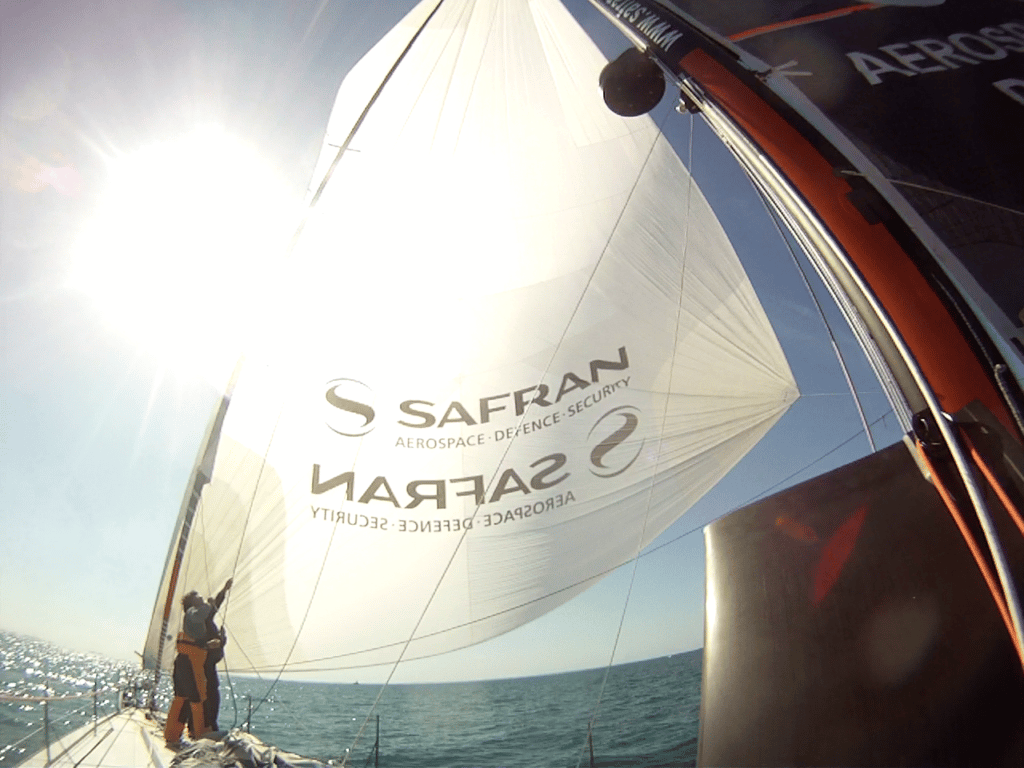
Safran
Sailing on Marc Guillemot’s IMOCA-class Safran was exceptionally calm the other day in the bay near Trinitié-sur-Mer along the Brittany coast of France. With a 10-knot warm wind over water that was as still as a lake, it was easy to forget the harsh conditions Guillemot will face when he sails around the world alone in the Vendée Globe race.
While taking part in the Everest of long-distance races, sailors often speak of the thrills, the intimate contact with the sea, and the sights that few will ever see in their lifetimes. But indeed, as Guillemot has experienced, the long trip can easily turn into a nightmarish and life-threatening hell. Huge waves, icebergs, punishing winds, and not to mention the extreme psychological and physical pressure associated with sailing for months alone, will probably prevent less than half of the fleet from even completing the race.
Things can also go very wrong when the sailor is down below and away from the wheel. I use this as an example because Guillemot has a literally painful memory about a sudden shift in wind he once experienced. He was taking a nap in the cabin while sailing across the Atlantic when a sudden side-wind gust blew the boat over, slamming his body against the other end of the boat as it broached, breaking three of his ribs.
He called his personal physician back home at Trinité-sur-Mer who told him the only thing he could do was to avoid physical activity. Despite the excruciating pain, Guillemot sailed on to finish the crossing.
“I just realized that I would be sitting down most of the way while sailing back anyway, like I would do at home. I decided to complete the voyage anyway,” Guillemot says. “I also wanted to complete the course to qualify for the Vendee Globe [in 2008-2009].”
Guillemot paid his dues during the last Vendée Globe race as well, when his boat suffered numerous breakages. The worst came when he had to abandon his course to come to the aid of Yann Éliès. He would later lose his keel 900 miles before the finish, but still managed to take third place on the podium.
During the many transats in which Guillemot has competed, he has been forced to abandon several times. Still, he has stoically continued to sail for decades while winning the Jacques-Vabre in 2009 and placing third in the Route du Rum in 2010.
Hopefully, Guillemot says, the next Vendée Globe will be different than the last one. His hopes are that he will be able to concentrate on racing without having to focus on figuring out how to jury rig his boat just to complete the race.
“I would really like to do the Vendée Globe without having to climb up the mast or to abandon my course to help another boat that is in distress,” Guillemot says. “This time, the boat is more ready, and I have sailed on it a lot. I really want to do a Vendée Globe where I can focus on competing.”
The Safran’s engineers have had over eight years and a Vendée Globe under their belt to prepare the boat this time around. Two key technologies that the Safran benefits from should help level the playing field against even the newest and fastest boats, Guillemot says.
A “woven carbon composite” material, for example, was used to make the mainsail rail for the new mast. The material is both lighter and more flexible, which Guillemot says will help the Safran‘s mast to better withstand strong breezes when beating up against the wind over large waves. It should be able to withstand wind conditions that would cause other boats in the fleet to dismast, he says. The lighter material for the mast also means that more weight could be added below the deck, for better stability and an improved righting-angle number.

A specialty carbon composite material makes the Safran’s mast both stronger and lighter.
However, neither Guillemot nor anyone else on his team would quantify how much lighter the mast is or what differences in speed it might make.
“I can’t give you the exact number,” Guillemot says. “But when we saw the numbers, everybody had a smile on their face.”
The Safran also has an inertial platform. Most of the other boats in the fleet will not benefit from a navigational system that will offer position, heading, attitude (pitch and roll), and other data for the three axis of the boat, Guillemot says.
While Guillemot will be the first to say that the most important goal of any of the competitors is to finish the race, Guillemot is in the race this year to win.
“It is certainly possible for me to win the race this year,” Guillemot says. “If you enter a race without a shot at winning, then it is better not to leave the starting buoy … You also don’t do this race because someone makes you, you do it because you really want to do it.”









